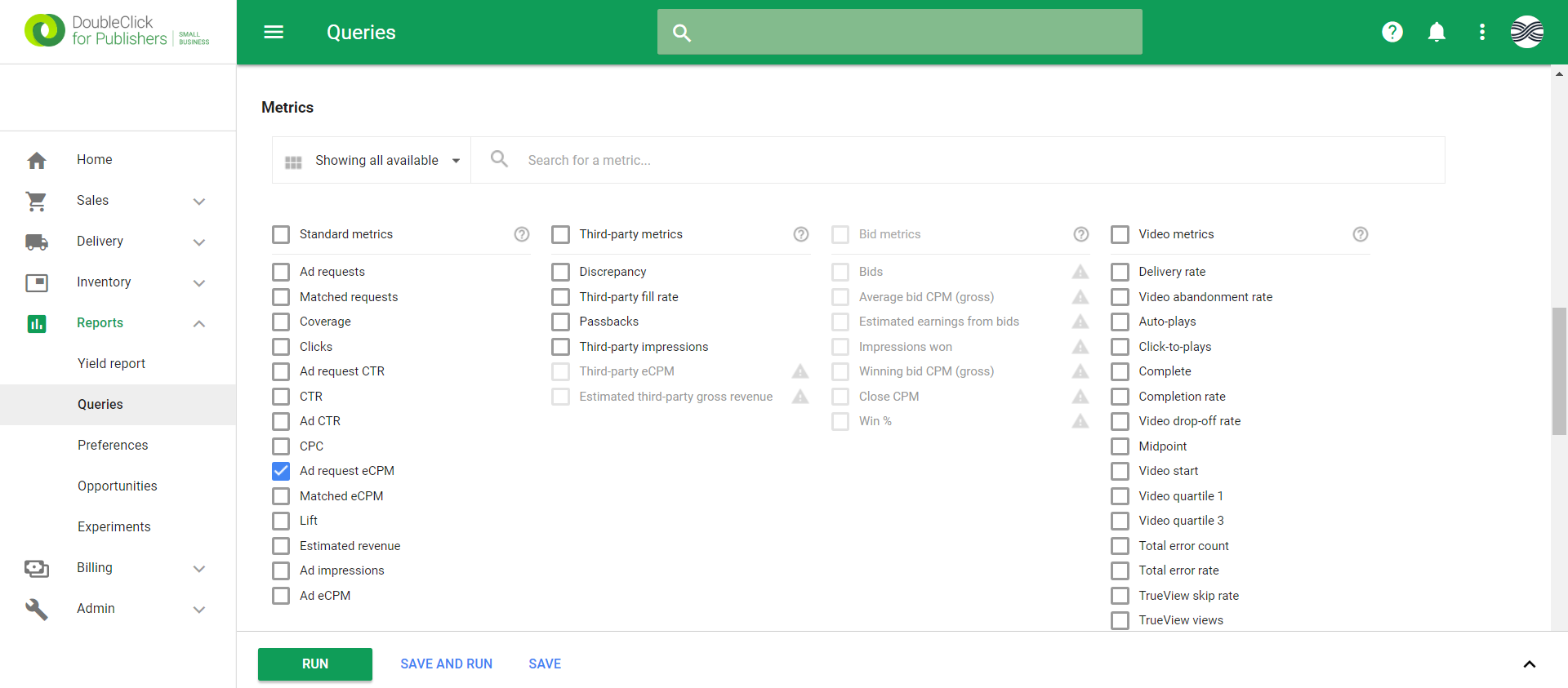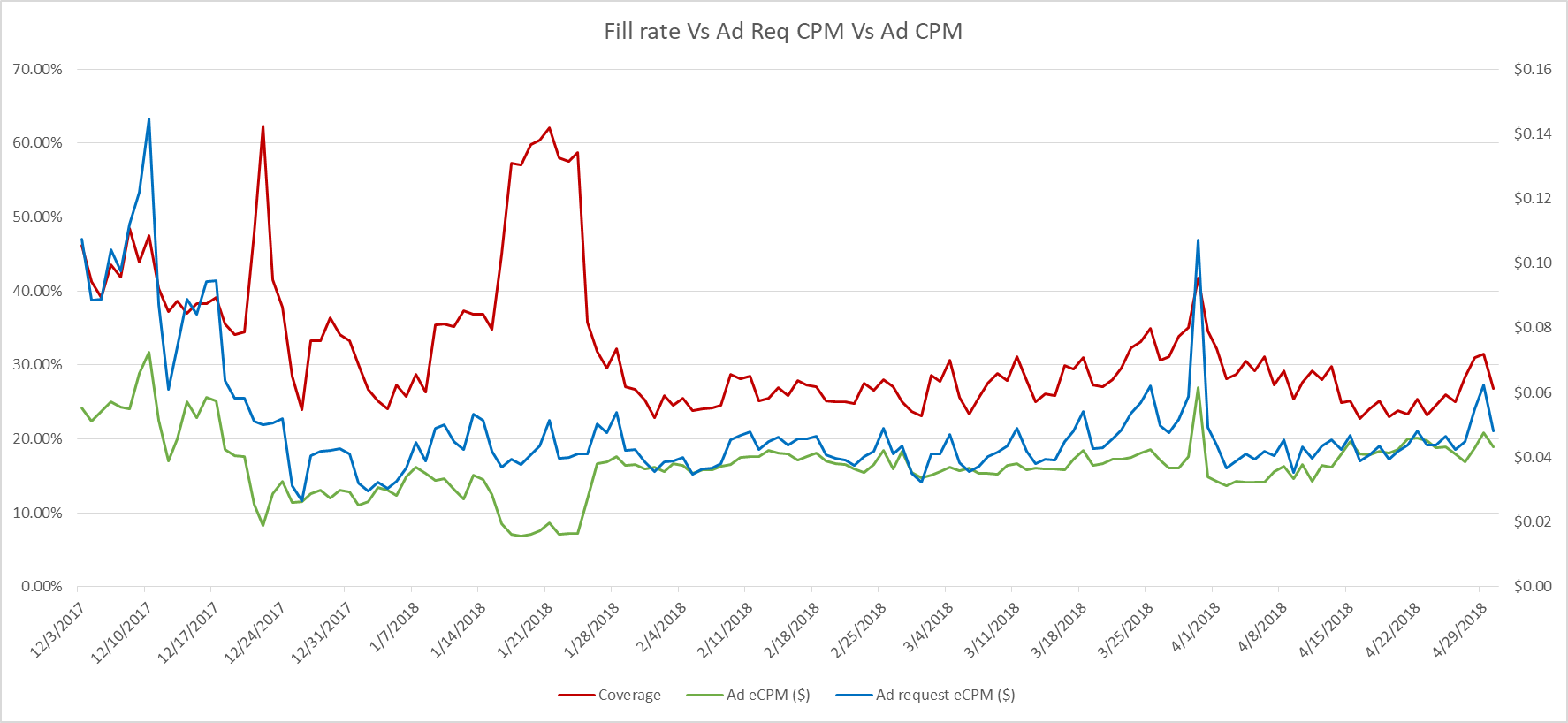Ad request is a good measure of your traffic but may not be same when you have multiple ad slots on your website. When there is an ad request, there is a potential to show an ad. And if you are a publisher, converting maximum ad requests into impressions (shown ad) and maintaining a high CPM number would be a challenge. This is because if you increase the base price for your inventory through Ad Exchange pricing rules, CPM may increase and coverage may reduce and vice versa if you lower your base price. So finding the optimum base / floor price would be a tedious task if you do not know which is the most suitable metric to measure the performance. Since the performance of your AdX ad revenue is very dependent on fill rate and Ad CPM, it is important to consider these two metrics while optimizing your Ad exchange using Ad Exchange pricing rules. What if I told you just one metric is enough which will reflect your Ad CPM as well as coverage? Yes, Ad request CPM can also be written as (Ad CPM) X (Coverage) assuming your matched request is equal to Ad Impressions.

So, it is very important to improve your Ad Request CPM rather than just increasing Ad CPM to get the maximum yield.
Google Ad Exchange provides Ad Request CPM as a Standard metric so one doesn’t have to calculate it every time.

In the below graph, you can see how Ad Request CPM is a subset of Ad CPM and coverage.

We can see clearly that a high coverage may not always yield you high revenue if the CPM is lower than optimum level and similarly a high CPM may not always yield a high revenue if coverage is lower than the optimum level. Continuously optimizing while balancing these two would give you better yields.
Author
Vinay B Rao
Senior Business Analyst, Tercept

Good read Vinay!
Thank you Gourav!